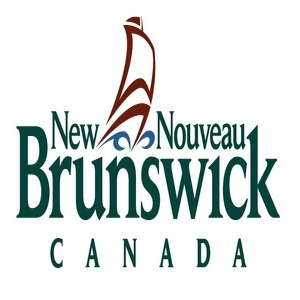wetland
Type of resources
Available actions
Topics
Keywords
Contact for the resource
Provided by
Years
Formats
Representation types
Update frequencies
status
Service types
-

Buffer zones surrounding mapped watercourses and wetlands where forest activity is regulated on Crown land to maintain water quality and aquatic habitat.
-

The goal of this carbon cycle study is to: * better understand wetland carbon uptake and losses to the atmosphere across watersheds * evaluate wetland carbon’s usefulness as a natural climate solution __Study sites__ Study sites for this project are: * Big Creek Watershed in Southern Ontario * White River in the experimental forest area in Northern Ontario We chose these sites to represent relatively data-scarce regions of Ontario, and locations that represent: * recently restored wetland * an undisturbed wetland These locations can show how wetlands can act as natural climate solutions. __Wetlands and climate change__ Wetlands absorb and release atmospheric carbon as plants grow and decompose. If wetlands absorb more carbon than they release, they can act as natural climate solutions. Wetland restoration and wetland preservation: * promotes carbon uptake by wetlands in Ontario * slows future climate warming Wetland carbon exchange with the atmosphere varies immensely across space and time. These continuous measurements are used to: * calculate the amount of carbon moving between the air, plants and soils of wetlands * improve numerical models that will help us predict how wetland carbon exchanges might respond to climate warming at these locations and other locations __Download the study data__ We submit this data to Ameriflux, which is a network of sites measuring ecosystem CO2, water and energy fluxes in North, Central and South America. You can download the data from [Ameriflux](https://ameriflux.lbl.gov/).
-

Five riparian classes of wetlands (W1 to W5) based on whether the wetland is a simple wetland or wetland complex, wetland size, and biogeoclimatic unit in which the wetland occurs. Wetland classification is based on the 1995 Forest Practices Code Riparian Management Area Guidebook: http://www.llbc.leg.bc.ca/public/PubDocs/bcdocs/237312/Rip-toc.htm
-
Created for distribution by the GeoYukon application as a comprehensive resource for all publicly available Base Data information in the Yukon government. This data may be used directly by other applications to dynamically display Yukon data; however, it may be subject to change as data sets are updated or added.
-

Surface drainage features including rivers, streams, lakes, islands, and watershed boundaries including names for many rivers and streams. Individual components of this dataset can be found on DNRED’s Open Data Catalogue. Those individual components may be more up-to-date than those used in this packaged dataset.
-

Non-Productive Forest: Potential Moose Habitat within the Lillooet Timber Supply Area
-

The distribution of unspecified waterfowl habitat in coastal British Columbia showing relative abundance (RA) by season and overall relative importance (RI). RI is based on project region and not on the province as a whole. CRIMS is a legacy dataset of BC coastal resource data that was acquired in a systematic and synoptic manner from 1979 and was intermittently updated throughout the years. Resource information was collected in nine study areas using a peer-reviewed provincial Resource Information Standards Committee consisting of DFO Fishery Officers, First Nations, and other subject matter experts. There are currently no plans to update this legacy data.
-

Terrestrial Ecosystem Mapping (TEM) project boundaries contains (study areas) and attributes describing each project (project level metadata), plus links to the locations of other data associated with the project (e.g., reports, polygon datasets, plotfiles, field data, legends).TEM divides the landscape into units according to a variety of ecological features including climate, physiography, surficial material, bedrock geology, soils and vegetation. This layer is derived from the STE_TEI_PROJECT_BOUNDARIES_SP layer by filtering on the PROJECT_TYPE attribute. Project Types include: TEM, NEM, TEMNSS, NEMNSS, TEMPRE, NEMPRE, TEMSEI, TEMSET, TEMTSM, TEMWHR, TEMSDM, TEMPRW, NEMPRW, and TEMSEW. Current version: v11 (published on 2024-10-03) Previous versions: v10 (published on 2023-11-14), v9 (published on 2023-03-01), v8 (published on 2016-09-01)
 Arctic SDI catalogue
Arctic SDI catalogue